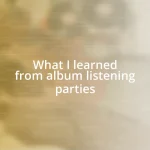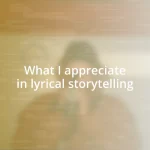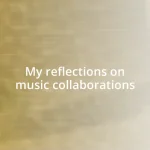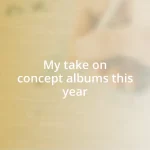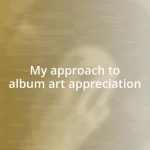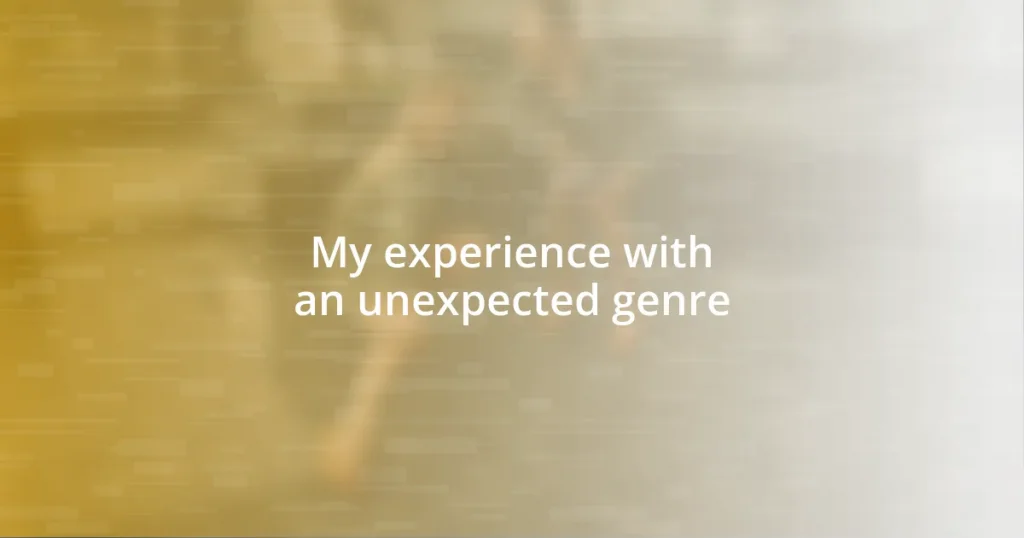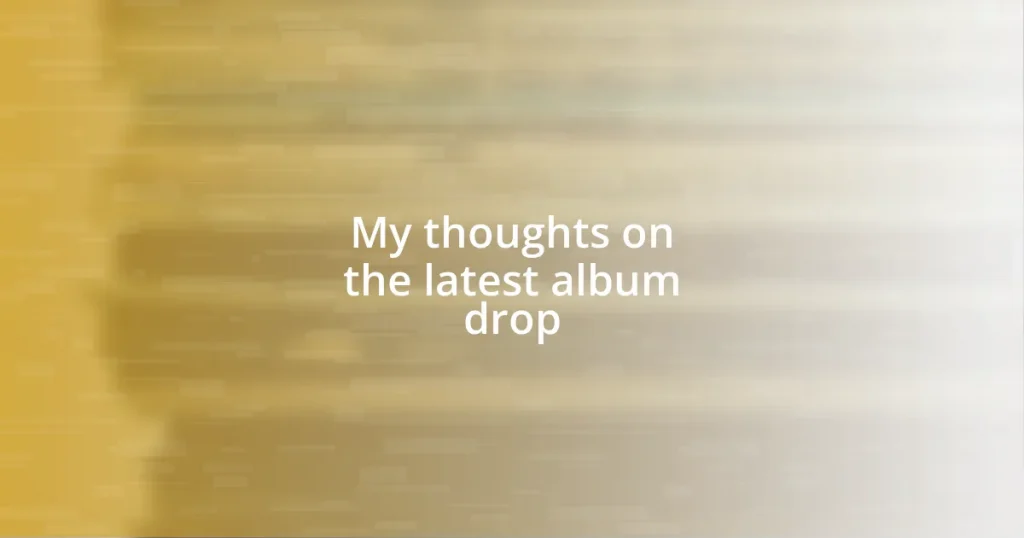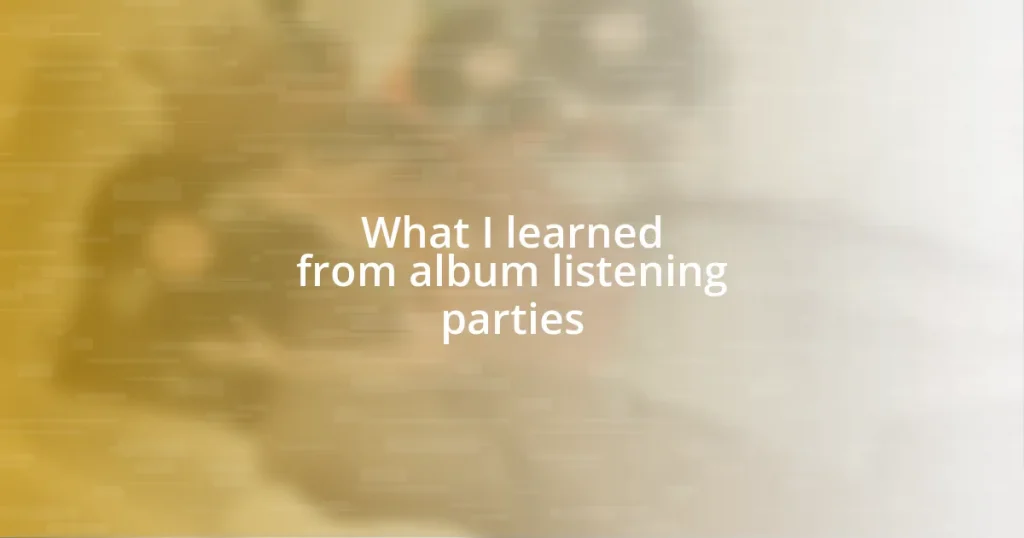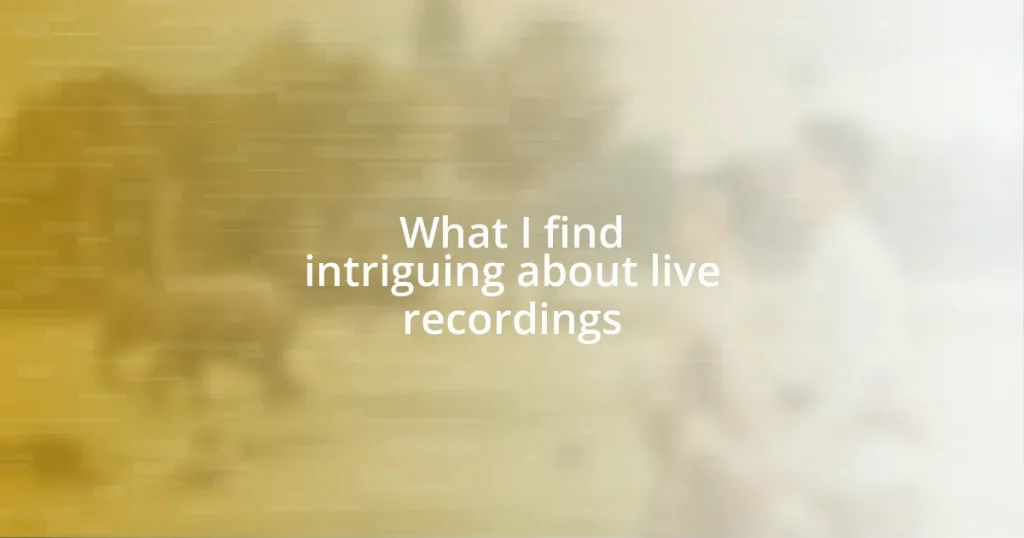Key takeaways:
- Encountering magical realism, graphic novels, and poetic memoirs expanded the author’s appreciation for diverse storytelling methods.
- Embracing curiosity and complexity in narratives revealed the deep connections between personal experiences and universal themes.
- Engaging with unfamiliar genres can lead to transformative insights and a richer understanding of literature and life.
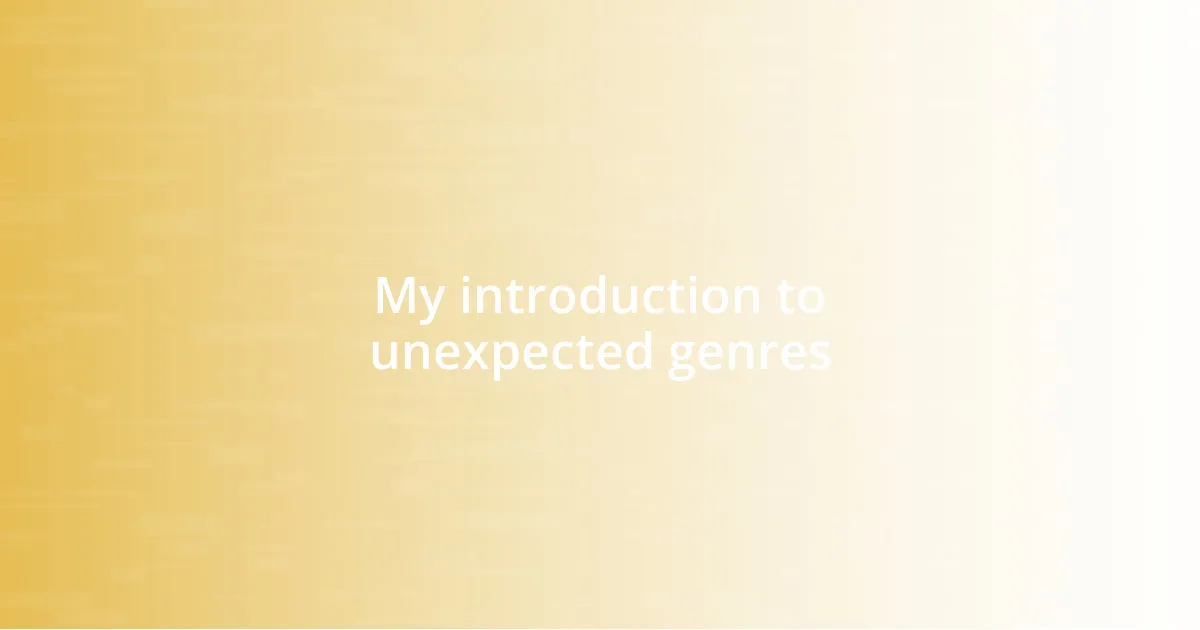
My introduction to unexpected genres
I remember the first time I stumbled upon a genre that completely took me by surprise: magical realism. I was flipping through a friend’s bookshelf when I noticed “One Hundred Years of Solitude” by Gabriel García Márquez. The cover caught my eye, but it was the blend of everyday life with fantastical elements that really captivated me. How could reality blur so beautifully with dreams?
Not long after, I found myself immersed in the world of graphic novels. I picked up “Maus” by Art Spiegelman, expecting a simple comic. Instead, I encountered a profound narrative about the Holocaust that left me reeling. Isn’t it fascinating how a different format can challenge our perceptions of serious subjects? This revelation opened up a whole new world of storytelling for me.
In my quest for unexpected genres, I also discovered the power of memoirs, particularly those that veer into the poetic. I stumbled across “The Color of Water” by James McBride, and I was floored by the lyrical quality of his writing. I often ask myself: how do some authors weave their personal truths into something so universally relatable? It’s this blend of the personal and the poetic that continually draws me to explore genres I never thought I’d enjoy.
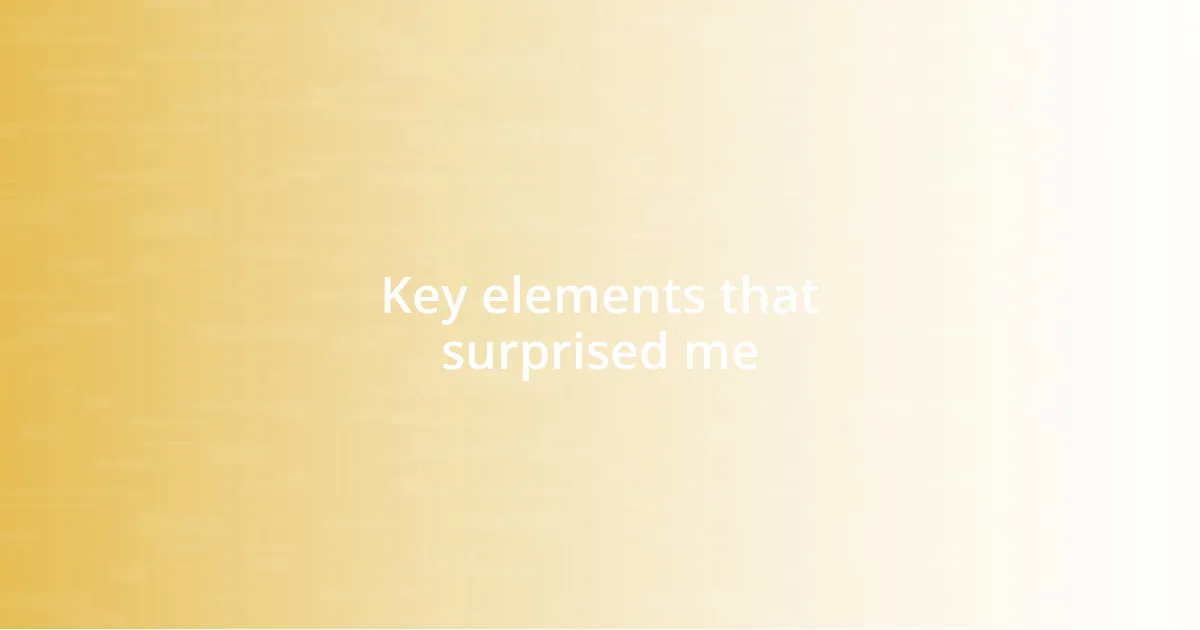
Key elements that surprised me
I was genuinely surprised by the depth of character development in magical realism. It was striking how the characters navigated their embellished realities while grappling with very real emotions. For instance, the protagonist in “One Hundred Years of Solitude” felt so relatable despite the surreal elements surrounding them. I found myself wondering, how can fantastical circumstances mirror our own struggles with identity and family?
Then there’s the visual storytelling in graphic novels, which I never considered could convey such powerful themes. When I read “Maus,” I realized that illustrations could deepen emotional impact. The stark contrasts and emotional expressions in the artwork amplified the narrative’s intensity. It made me reflect on how sometimes, a picture truly is worth a thousand words, especially when addressing heavy topics like loss and survival.
Finally, I discovered that memoirs with poetic undertones can be surprisingly transformative. James McBride’s “The Color of Water” taught me that personal stories can resonate on a universal level. It dawned on me how a poetic approach can elevate the mundane into something extraordinary. This realization inspired me to look beyond straightforward narratives and seek out the beauty in everyday experiences, reminding me that life’s stories are often waiting to be told in a richer, more evocative manner.
| Element | Surprise Factor |
|---|---|
| Magical Realism | Deep character emotions intertwined with fantastical elements |
| Graphic Novels | Visual storytelling enhancing heavy themes |
| Poetic Memoirs | Universal resonance through personal narratives |
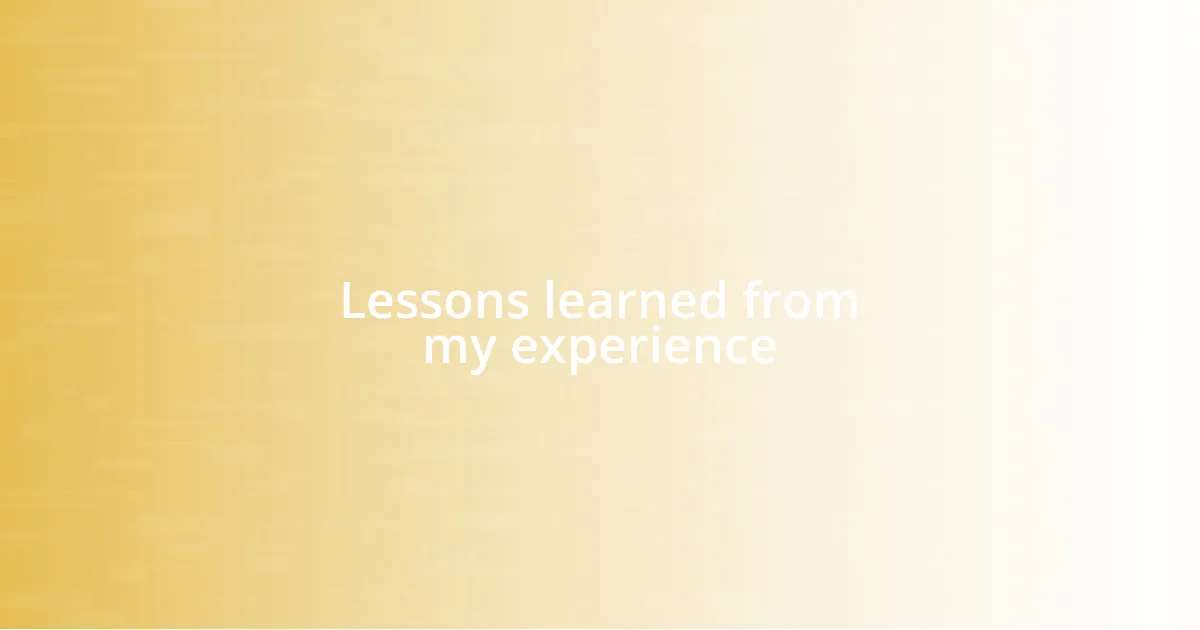
Lessons learned from my experience
The unexpected genres I explored taught me some profound lessons about storytelling. One key takeaway was the importance of embracing the unfamiliar. While I was initially hesitant to dive into magical realism, that leap of faith rewarded me with a perspective I would have otherwise missed. It reminded me of the thrill of stepping into a new world, and how allowing myself to be vulnerable can lead to unexpected joys and insights.
Here are some lessons I learned from my experience:
- Embrace Curiosity: My exploration was fueled by a desire to understand different formats and styles, which encouraged me to remain open-minded.
- Find Beauty in Complexity: Characters and narratives often mirror real-life struggles, teaching me that complexity can add depth to my understanding of life.
- Visuals Have a Voice: The illustrations in graphic novels proved that storytelling can transcend words, making me appreciate the emotional weight of visuals even more.
- Universality of Experience: Personal stories, like McBride’s, resonate broadly, showing that individual truths can connect us all on a deeper level.
I also learned to appreciate the patience required in consuming diverse genres. Initially, I found myself yearning for the straightforward narratives I was accustomed to. But as I allowed the language and imagery of poetic memoirs to wash over me, I discovered a richness that compelled me to linger and absorb more deeply. This patience allowed me to connect with voices that challenged and inspired me in ways I never expected.
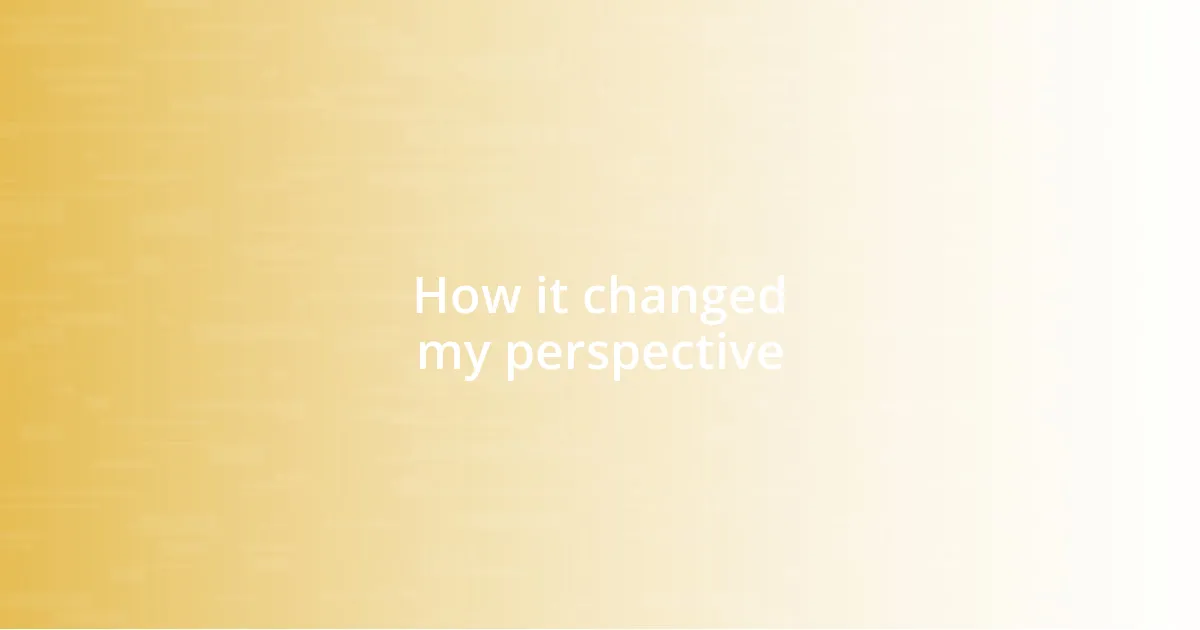
How it changed my perspective
Diving into these unexpected genres drastically shifted how I view storytelling. I used to think that the most profound narratives were confined to traditional structures. However, encountering the emotional weight in magical realism made me realize that vulnerability can manifest in the most fantastical ways. Have you ever felt a story resonate with you in a way you never anticipated? For me, it was a revelation; I began to honor the spaces where reality meets imagination, finding depth in every page.
Graphic novels were another revelation for me. I remember flipping through the pages of “Maus” and being struck by the way illustrations can evoke feelings words alone may fail to capture. It made me rethink what I consider valuable in literature. Can you imagine a scene so powerful that it lingers in your mind simply because of an image? That’s what happened to me, and it illuminated the power of visual storytelling and how it can bypass barriers to connect on an emotional level.
Finally, exploring poetic memoirs reminded me that all our personal experiences—no matter how unique—hold universal truths. I was struck by how McBride’s reflections mirrored my own family journey, evoking emotions that resonated deep within me. It led me to ponder: how often do we overlook the extraordinary in our own lives? Each narrative I explored encouraged me to dig deeper into my own story, revealing layers of meaning and connection that I previously missed.
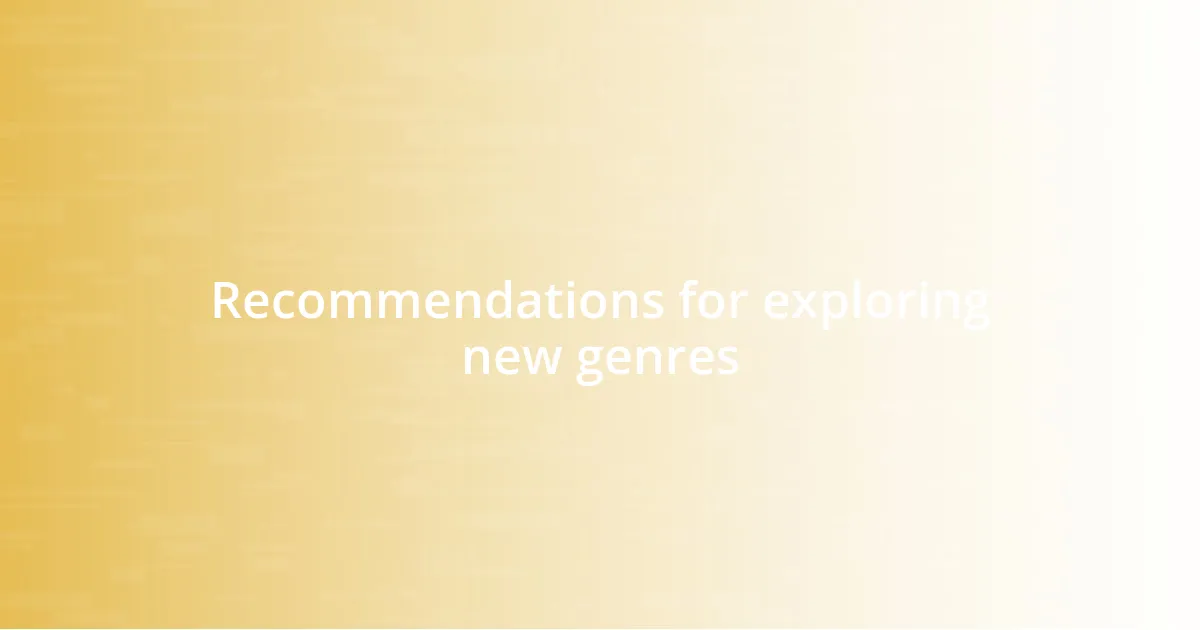
Recommendations for exploring new genres
To truly embrace new genres, I recommend starting with a buddy read. Pairing up with a friend who already enjoys the genre you’re intrigued by can offer wonderful insights. I remember reading a sci-fi novel with a close friend, who constantly excitedly pointed out themes and motifs I would have missed on my own. It transformed the experience into a lively discussion rather than just a solitary flight through unfamiliar narratives.
Another helpful approach is to set small goals. Instead of diving headfirst into a complex genre like magical realism, challenge yourself to read just one short story or a couple of chapters. I experimented with this technique during my exploration of post-apocalyptic fiction. By breaking it down, I could digest the new concepts at a comfortable pace and slowly let the themes resonate. Have you ever experienced that moment when everything clicks? That happened for me, revealing layers I hadn’t anticipated.
Lastly, don’t shy away from embracing the weird. Sometimes, the heart of a new genre lies in its eccentricities. I once stumbled upon a quirky memoir about a couple’s pet snail. While I never considered myself a fan of such narratives, I found it oddly compelling. It taught me that every story, no matter how peculiar, can offer a unique lens through which to view life. So, I invite you to ask yourself: what unconventional tales might you be missing out on? Taking that leap can lead to delightful surprises.
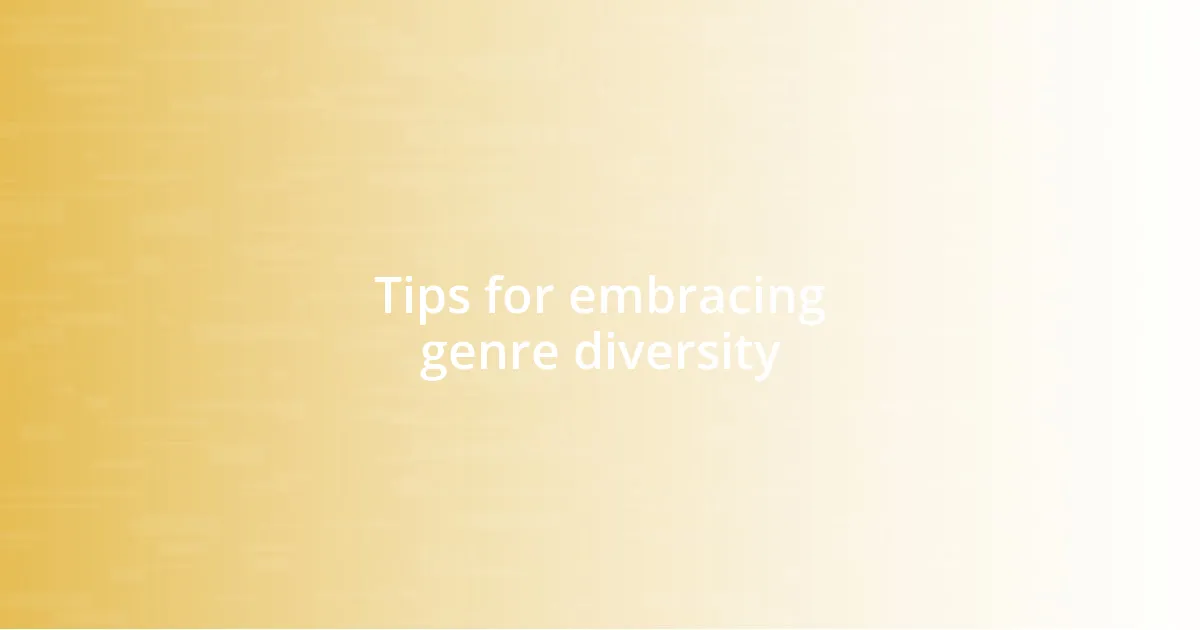
Tips for embracing genre diversity
One of the best tips I have for embracing genre diversity is to keep an open mind while diving into unfamiliar territory. I remember picking up a horror anthology simply because a friend raved about it. At first, I was hesitant, thinking that horror wasn’t for me. But to my surprise, the emotional depth in those chilling stories opened up a new world of tension and resolution that was both captivating and unsettling. Have you ever been surprised by a book that shifted your perceptions entirely?
Another powerful approach is to break down barriers by exploring cross-genre works. Take, for example, my experience with a novel that combined elements of romance, fantasy, and historical fiction. This blend created a unique narrative style that I found intoxicating. It reminded me that sometimes the magic of storytelling lies at the intersection of different genres. Have you considered how blending elements, rather than sticking strictly to one genre, could enrich your reading experience?
Lastly, don’t hesitate to seek out recommendations from diverse voices. I once attended a reading at my local library and was introduced to an indigenous author who penned a gripping blend of mythology and personal narrative. The stories she shared challenged my understanding and gave me fresh perspectives on culture and identity. It made me wonder: who’s telling the stories that are shaping your views? Engaging with diverse voices not only broadens your genre palette but also enriches your understanding of the world.

